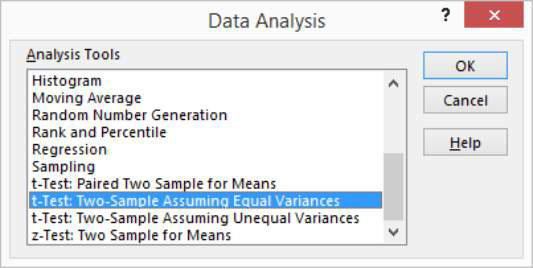

comparing the acidity of a liquid to a neutral pH of 7), perform a one-sample t-test. If there is one group being compared against a standard value (e.g.two different species, or people from two separate cities), perform a two-sample t-test (a.k.a. If the groups come from two different populations (e.g.measuring before and after an experimental treatment), perform a paired t-test. If the groups come from a single population (e.g.One-sample, two-sample, or paired t-test? When choosing a t-test, you will need to consider two things: whether the groups being compared come from a single population or two different populations, and whether you want to test the difference in a specific direction. If your data do not fit these assumptions, you can try a nonparametric alternative to the t-test, such as the Wilcoxon Signed-Rank test for data with unequal variances. have a similar amount of variance within each group being compared (a.k.a.are (approximately) normally distributed.The t-test is a parametric test of difference, meaning that it makes the same assumptions about your data as other parametric tests. If you want to compare more than two groups, or if you want to do multiple pairwise comparisons, use an ANOVA test or a post-hoc test. Frequently asked questions about t-testsĪ t-test can only be used when comparing the means of two groups (a.k.a.(2010) Statistical methods for psychology (7 th ed.). Note that columns D and E display the input data from columns A and B in non-standard format. The results of the test are shown on the right side of Figure 3.

The Input Range 1 field should be filled in with A4:B15. You can use the T Test and Non-parametric Equivalents data analysis tool to accomplish this as described for Example 1, except that when the dialog box appears, as shown in Figure 1, you need to uncheck the Column headings included with data field and select the Use standard (stacked) format for two sample test field.

The T Test and Non-parametric Equivalents data analysis tool can also be used with data in standard (stacked) format.Įxample 2: Conduct the two independent sample t-test for the data in standard format as shown in range A3:B15 of Figure 3.įigure 3 – t-test for data in standard format In Example 1, the input data consisted of two columns, one for each sample. Notice that the df reported by Excel’s t-Test: Two-Sample Assuming Unequal Variances data analysis tool is rounded off to the nearest integer (see Two Sample t-test with Unequal Variances), while the df reported by the Real Statistics data analysis is not rounded off. Such cells will be ignored in the analysis. The input data for the two independent sample t-test can have missing data, indicated by empty cells or cells with non-numeric data. We can get this same value by using the formula =DF_POOLED(A4:A13, B4:B13).

You can see from Figure 2 that the degrees of freedom have been reduced from 18 to 11.208 under the assumption of unequal variances. When you press the OK button, the output shown in Figure 2 is displayed. Otherwise, the ranges of the two samples should be inserted separately in the Input Range 1 and Input Range 2 fields. If the two samples consist of two contiguous columns, then the combined range can be inserted into the Input Range 1 field, as shown in Figure 1. Fill in the dialog box that appears as shown in Figure 1. ExampleĮxample 1: Repeat Example 2 of Two-sample T-test with Unequal Variances using the Real Statistics data analysis tool.Įnter Ctrl-m and select T Tests and Non-parametric Equivalents from the menu. A second measure of effect size is also provided, which we will study in Dichotomous Variables and the t-test. Real Statistics Data Analysis Tool: The Real Statistics Resource Pack provides a data analysis tool called T Tests and Non-parametric Equivalents, which combines the analyses for equal and unequal variances, as well as providing confidence intervals and the Cohen effect size.


 0 kommentar(er)
0 kommentar(er)
